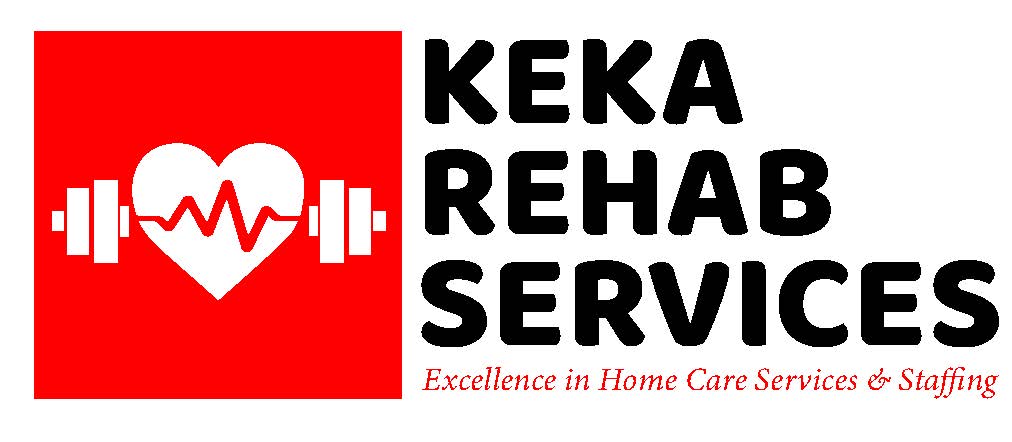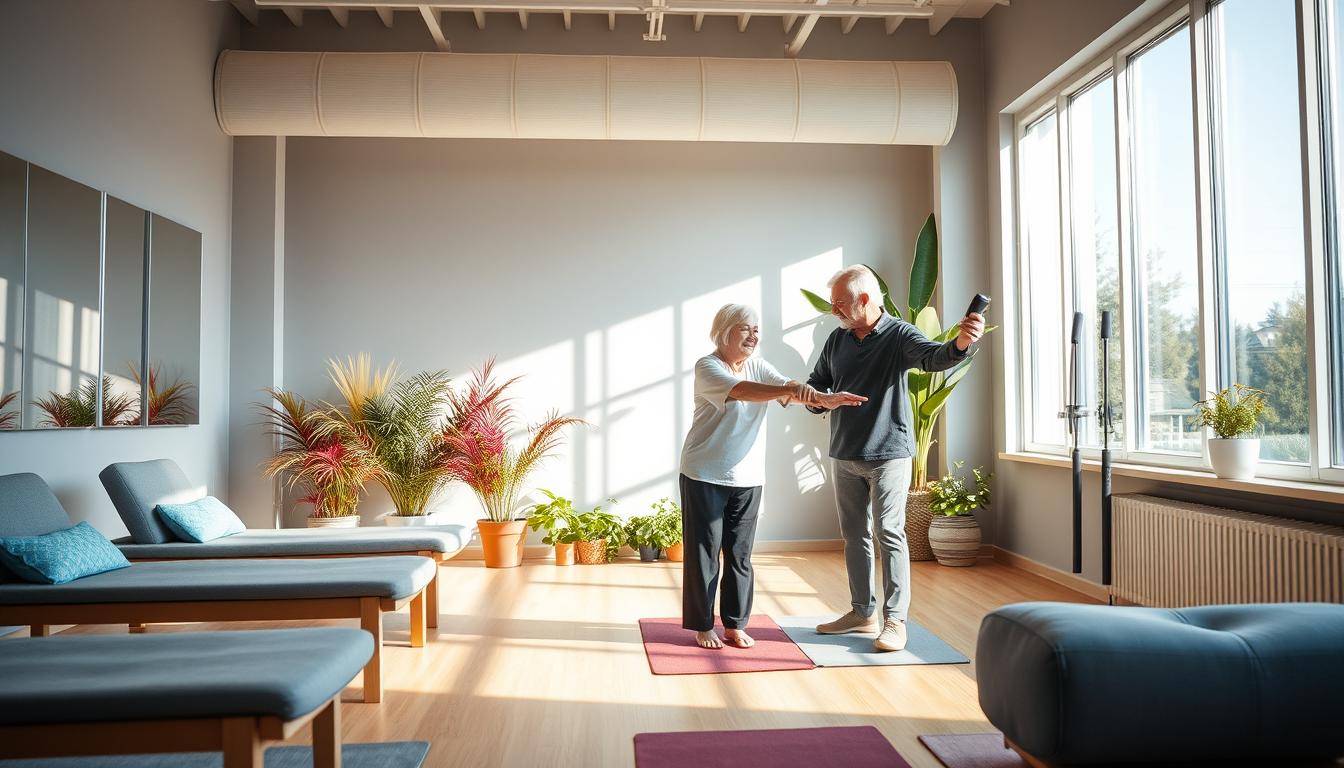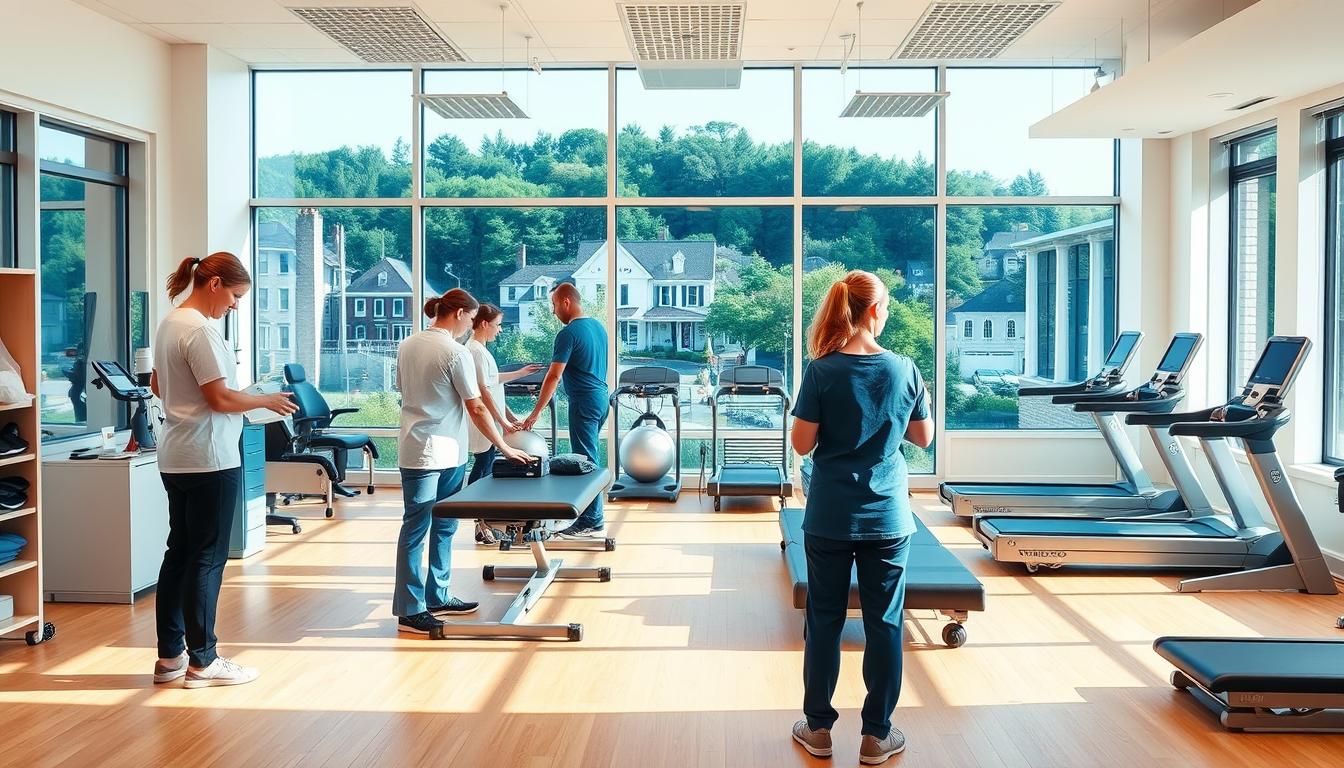Physical therapy is a big help for older adults. It keeps you healthy and independent as you get older. It also makes you less likely to fall or get hurt.
Physical therapists create special fitness plans for seniors. These plans are made with care to catch health problems early. They help you stay on top of your health. Physical therapy can help with many issues, like weak bones or dizziness.
Physical therapy does more than just keep you fit. It makes your life better, boosts your confidence, and encourages an active lifestyle. It helps you stay strong, move well, and balance. This way, you can do everyday things easily.
Physical therapy is great for many reasons. It’s safe and works well for recovery, managing pain, or staying active. It’s a key part of staying healthy and enjoying life as a senior.
Understanding Physical Therapy for the Elderly Population
Physical therapy is key for seniors. It helps with mobility and keeping them independent. It’s designed to meet the unique needs of older adults.
What Geriatric Physical Therapy Entails
Geriatric physiotherapy focuses on age-related body changes. It aims to boost strength, balance, and mobility. Physical therapists make plans that fit each person’s needs.
These plans include exercises to strengthen muscles and improve blood flow.
Role of Physical Therapists in Senior Care
Physical therapists are vital in senior care. They help improve movement and function. They also suggest home changes to prevent falls.
They manage conditions like osteoporosis and Parkinson’s disease.
Clinical Precision in Senior Fitness Programs
Senior fitness programs need careful planning. Physical therapists design safe, effective workouts. These include weight training and stretching.
The goal is to boost mobility and reduce pain. This way, seniors can stay independent and live better lives.
Benefits of Physical Therapy for Seniors
Physical therapy is great for older adults. It helps them stay flexible, strong, and balanced. Seniors can also improve their posture and endurance with the right exercises.
One big plus is preventing falls. Physical therapy can lower fall risks by up to 50%. This is key to keeping seniors mobile and safe from injuries.
Physical therapy sessions are usually two to three times a week. They last from four to twelve weeks, depending on the person’s needs. Therapy at home can make seniors more likely to stick with it, leading to better results.
It’s also cheaper, cutting down on hospital stays and travel costs.
Physical therapists use different methods to help with health issues:
- Ultrasound therapy for knee arthritis
- Electrical stimulation for muscle contraction in stroke victims and arthritis patients
- Cold therapy for acute soft-tissue injuries
- Heat therapy to relax muscles and improve circulation
These methods, along with exercises at home, help seniors recover from injuries or surgeries. They also help those with heart attacks, strokes, or chronic conditions like osteoarthritis. Physical therapy is key to improving seniors’ health and supporting their active lifestyle.
Enhancing Mobility and Independence in Daily Life
Physical therapy is key for seniors to stay independent and mobile. It helps improve basic movements and supports an active lifestyle. This is important because chronic pain in hips, neck, back, and knees can really affect daily life.
Improving Basic Movement Functions
Functional training focuses on strength, flexibility, and coordination. Physical therapists create custom exercise plans. These plans strengthen muscles and improve joint function, lowering the risk of falls and injuries.
These exercises also benefit the nervous system, heart, lungs, and skin health.
Maintaining Household Activities
Physical therapy helps with daily tasks like cooking, laundry, and cleaning. It also suggests home changes to make living safer and easier.
Supporting Active Lifestyle Choices
Physical therapy keeps seniors active. It includes balance and coordination exercises to prevent falls. Therapists also offer wellness coaching and fitness programs to boost fitness and social connections.
Some programs even use animal-assisted therapy or aromatherapy for more benefits.
Fall Prevention and Balance Training
Falls are a big risk for older adults. One in four Americans aged 65 and older falls every year. This shows how important it is to have exercises to prevent falls. Physical therapists are key in helping with this by doing detailed assessments and creating special plans.
Balance Assessment Techniques
Physical therapists do detailed checks to find out why seniors might fall. They look at heart problems, vision changes, and how medicines might make people dizzy. Knowing these things helps them make plans to help seniors stay steady and avoid falls.
Strengthening Exercises for Stability
Exercises that improve balance and strength are key in preventing falls for older adults. For example, the sit-to-stand exercise helps build leg strength and improves body movement, helping with balance.
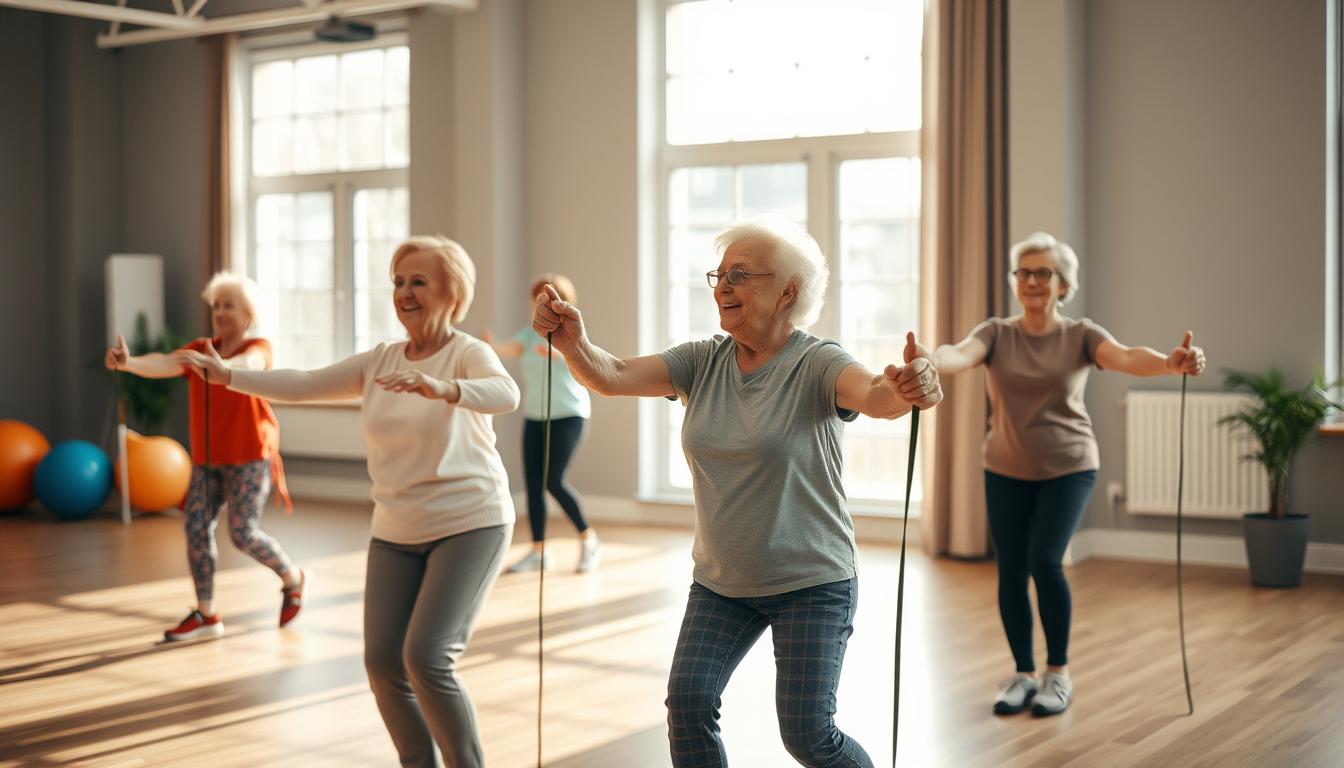
Balance training can cut fall injuries by 37% and broken bones by over 60% in seniors. These programs help coordinate, protect joints, and strengthen the core, making seniors more stable and mobile. The goal is to hold each balance exercise for 10 seconds, then 30 seconds, with five reps done twice daily.
Environmental Safety Strategies
Physical therapists also work on making the environment safer for seniors. They teach them about dangers at home, like slippery floors or uneven paths. By improving physical fitness and making the environment safer, therapists help seniors stay independent and healthy.
Pain Management and Chronic Condition Support
Physical therapy is key for seniors with pain. Almost one in three adults over 65 live with ongoing pain. Chronic pain hits over 50% of older adults, with 70% feeling pain in more than one place.
Therapies for seniors target pain from arthritis, diabetic neuropathy, and osteoarthritis. These methods are safer than drugs, avoiding side effects. NSAIDs can harm the stomach in 15-30% of users and kidneys in about 5%.
Physical therapists use heat, massage, and gentle stretches. These help reduce pain and boost function in chronic conditions. Seniors who exercise feel less pain than those who don’t.
Therapies for seniors do more than ease pain. They also help seniors stay connected and manage mental health. Some programs add mental health support to tackle pain’s emotional side.
Research shows these therapies work well. A study of 2400 patients saw a 10% boost in function. Seniors in physical therapy or rehab see better pain and function over time.
Recovery and Rehabilitation After Surgery or Injury
Physical therapy is key for seniors after surgery or injury. It helps them regain strength and mobility. Physical therapists make plans that are safe and effective for each senior.
Post-Operative Care Protocols
Starting physical therapy early helps seniors recover faster. It prevents complications and improves their quality of life. Therapists focus on improving joint mobility and flexibility after surgery.
These efforts help seniors move better and use less pain medication.
Injury-Specific Treatment Plans
Physical therapists create plans for each injury in older adults. These plans aim to reduce pain and swelling. They also prevent infections.
For those with chronic pain, physical therapy offers relief through specific exercises.
Progressive Exercise Programs
Seniors follow exercise programs that get stronger over time. These programs improve range of motion and physical function. They help seniors stay independent and avoid falls.
Physical therapy is a game-changer for older adults recovering from injuries or surgery. It helps with physical recovery and improves overall well-being. Regular sessions and exercises at home help seniors stay active and confident.
Treating Age-Related Health Conditions
Geriatric physiotherapy is key in managing health issues that come with age. As more seniors live longer, the need for specialized care grows. By 2040, seniors will comprise 21.6 percent of the U.S. population, showing the need for tailored health services.
Osteoporosis Management
Physical therapists create exercise plans to boost bone health in seniors with osteoporosis. These plans include weight-bearing and resistance training. This helps strengthen bones and muscles, keeping bones dense and reducing fracture risk.
Arthritis Care Strategies
Arthritis is common among older adults. In Canada, 33% of men and 40% of women over 65 have osteoarthritis. Physical therapy for arthritis aims to lessen pain and improve movement. Techniques like joint mobilization, stretching, and strengthening manage symptoms and boost mobility.
Neurological Condition Support
Physical therapy helps seniors with neurological conditions like Parkinson’s disease or multiple sclerosis stay balanced and stable. Therapists design personalized plans, including gait training, balance exercises, and coordination activities, to enhance their daily living skills.
Age-related mobility assistance is a vital part of geriatric physiotherapy. Physical therapists help seniors stay independent and maintain a good quality of life. The field is expanding, with more older adults expected to receive physiotherapy care. The number is set to double from 1.5 million in 2014 to 3.0 million by 2035.
Maintaining Bone and Muscle Health
As you get older, your body faces new challenges. Elderly fitness programs are key to tackling these issues. Osteoporosis, for example, can lead to broken bones and less mobility, affecting women after menopause and men later in life. Muscle loss, or sarcopenia, starts as early as your 30s.
Balance and strength training are vital for the elderly. Regular exercise, like weight-bearing activities and strength training, strengthens bones and prevents bone loss. Aim for 30 minutes of weight-bearing activity at least four days a week.
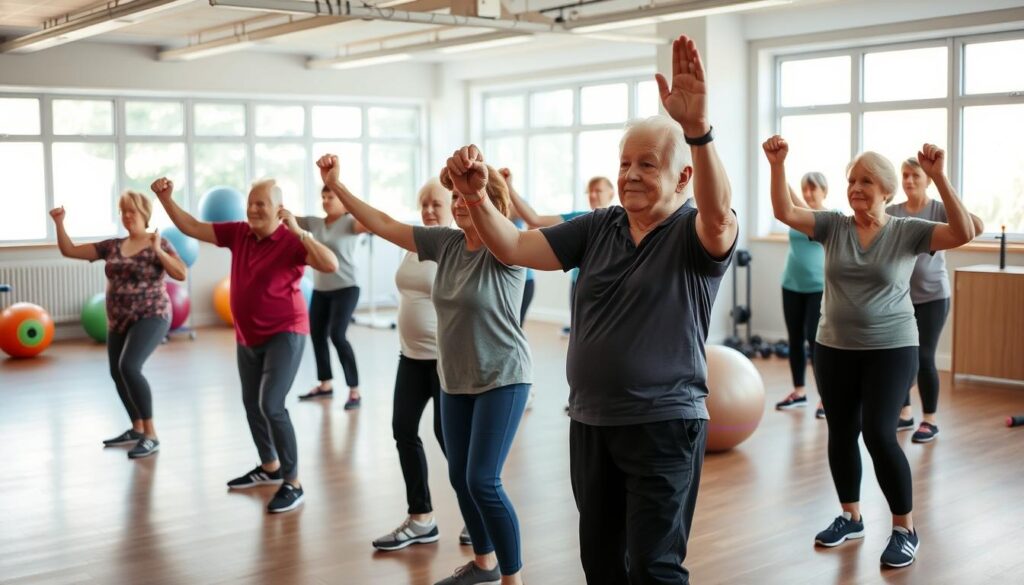
The Centers for Disease Control and Prevention (CDC) suggests at least 150 minutes of moderate-intensity aerobic exercise weekly for seniors. Activities like brisk walking, swimming, or cycling are good options. Balance exercises and tai chi can cut falls by 47% and hip fracture risk by about 25%.
It’s never too late to start exercising. Even at home, you can significantly improve your health and keep your independence. Talk to a physical therapist to create a plan that fits your needs. This will help you keep your bones and muscles strong as you age.
Physical Therapy for Specialized Senior Conditions
Senior rehabilitation tackles unique health issues older adults face. Geriatric physiotherapy provides specific treatments for common elderly conditions.
Vertigo and Balance Disorders
Vertigo and balance problems significantly affect seniors’ lives. One in four older Americans falls yearly, showing the need for special care. Physical therapists use balance tests and vestibular rehab to boost stability and lower fall risks.
Incontinence Management
Incontinence is common among seniors but not a must-have part of ageing. Geriatric physiotherapy includes pelvic floor exercises and lifestyle changes to manage it. These methods strengthen muscles and improve bladder control, boosting independence and confidence.
Cancer Recovery Support
Physical therapy is key in cancer recovery for seniors. It aims to keep strength, manage pain, and boost overall health during and after treatment. Personalized exercise plans help seniors regain mobility and fight off fatigue from cancer treatments.
Geriatric physiotherapy experts evaluate conditions like Parkinson’s disease, Alzheimer’s, and arthritis. They design specific plans to tackle these issues and support ageing in place. By adding sit-to-stand and calf exercises, physical therapists enhance muscle strength and walking speed and reduce fall risks.
Remember, senior rehabilitation is more than just recovery; it’s about improving life quality. Think about physical therapy if you struggle with balance, chair mobility, or stairs. With expert help, you can strive for better health and independence.
Building Strength and Endurance Safely
Physical therapy is key for seniors to keep their strength and mobility. Elderly fitness programs aim to build muscle power and stamina safely. These programs are vital for older adults, helping prevent muscle loss and boosting overall health.
Customized Exercise Programs
Balance and strength training for the elderly must fit each person’s needs. Physical therapists create programs that consider individual abilities and health. This tailored approach ensures safety and effectiveness in building strength and endurance.
Progressive Resistance Training
Resistance training is a core part of elderly fitness programs. It builds muscle strength gradually, which is key for staying independent. Seniors should do strength exercises at least twice a week for noticeable benefits.
This training can also improve bone density and balance and lower the risk of falls.
Cardiovascular Conditioning
Cardiovascular exercises are essential for heart health and endurance. Experts suggest 150 minutes of moderate-intensity activity weekly for adults over 65. Activities like brisk walking, swimming, or cycling are good options. Regular cardio workouts help seniors keep up their stamina for daily tasks.
By mixing resistance training with cardiovascular exercises, elderly fitness programs fight sarcopenia. This condition is marked by muscle loss and weakness. These all-encompassing programs boost physical abilities and improve seniors’ quality of life.
Maximizing Quality of Life Through Movement
Physical therapy is key for seniors to stay mobile and independent. It improves physical health and boosts overall well-being and life satisfaction.
Functional training helps older adults stay independent. It focuses on exercises that mimic daily activities. This improves muscle strength, balance, coordination, and flexibility.
Physical therapists create programs that meet each person’s needs and goals. These might include:
- Range of motion exercises
- Strengthening exercises
- Balance training
- Endurance activities
- Flexibility routines
Seniors can do daily tasks better, feel less pain, and avoid falls with these programs. This approach also boosts confidence and encourages an active lifestyle.
Physical therapy helps people of all ages live better lives. For the elderly, it’s about preventing falls, improving mobility, and managing joint pain. It helps them stay independent and enjoy their favourite activities.
Conclusion
Physical therapy greatly benefits seniors, improving their life quality. Geriatric physiotherapy helps keep them independent and manages chronic conditions. Regular exercise can prevent heart disease and diabetes and reduce fall risks by boosting strength and balance.
Studies prove that functional training exercises (FTE) significantly improve daily activities for older adults. A study showed a significant improvement in daily functioning, with a mean difference of -2.5 between the FTE and control groups. This shows how vital tailored physical therapy is for seniors.
Seniors can lead more active and fulfilling lives by adding physical therapy to their healthcare routine. Exercise helps improve sleep, which is key for older adults who often struggle with insomnia. It also lowers dementia risk, showing the cognitive benefits of geriatric physiotherapy.
Remember, it’s never too late to start physical therapy. Personalized care can significantly improve mobility, manage pain, and enhance well-being in older adults. Start moving and take charge of your health today.
